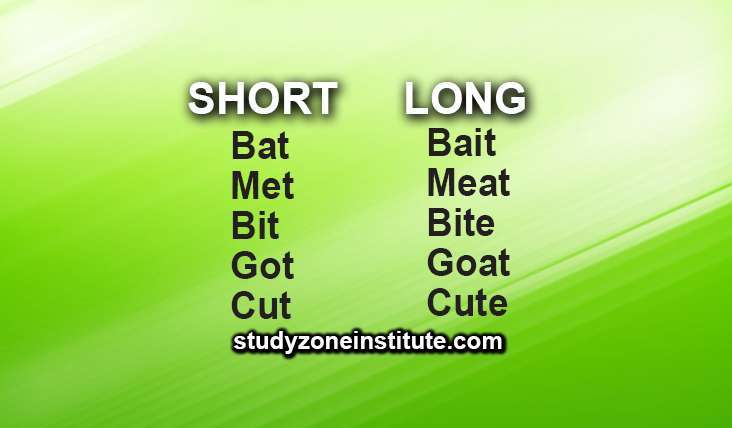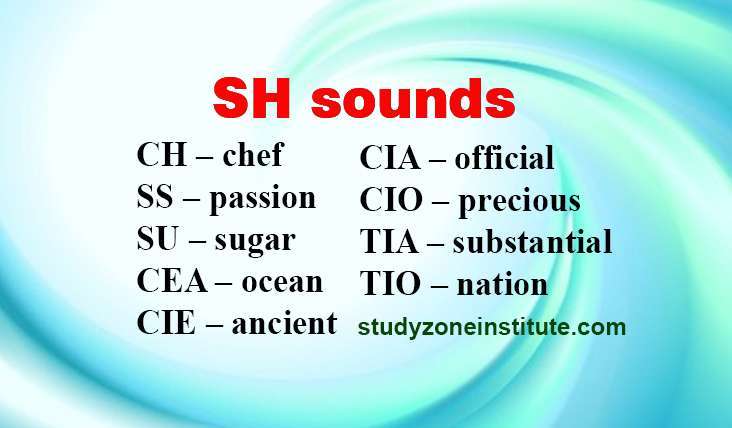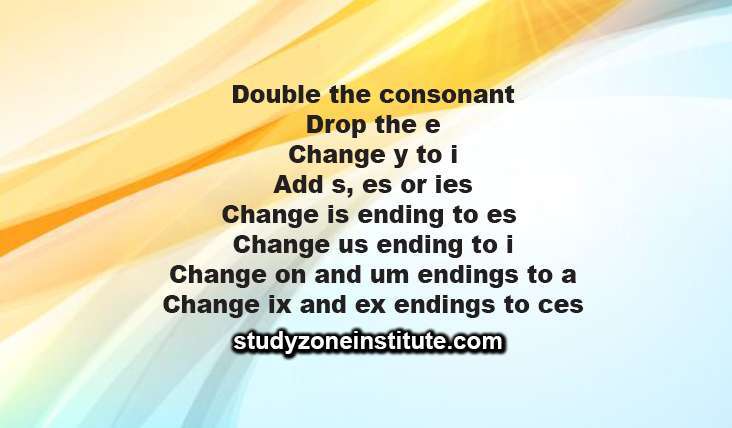If you know persons who shine in every aspect of their life except for when it comes to reading, then this is for you. Reading intervention is a programme used to bring a struggling reader up to grade level.
This programme involves activities and strategies that are tailored to suit the particular needs of a struggling reader to ensure fluency and comprehension are achieved. It requires a tutor to set aside all the fancy terminology and approaches that usually describe the English language.
The student struggles with reading because something went wrong in the learning process at the preschool level and the reading methods used were not effective. Your task is to find the missing pieces and fix the puzzle.
CLICK HERE to Improve Spelling and Reading Skills with 10 BOOKS OF SHORT STORIES with rimes.
If one strategy does not work, try another. Not all students learn by reading and writing. Some respond better to lessons that involve audio, visuals and kinesthetic activities.
Sometimes, the problem is simply that the person learned numerous sight words and high frequency words before learning how to decode words properly. These readers guess the word in front of them because it resembles another word.
If, however, the person displays hearing problems, speech delay, difficulty understanding verbal instructions, or autism signs, then you should seek medical assistance for the struggling reader.
Also, if the child has behavioural issues, it is very important for the child’s parents and teachers to be stern and enforce age-appropriate consequences for bad behaviour.
Creating a reading intervention programme
As for the average child, teen and adult who cannot make sense of the written word, it is possible for them to become proficient readers with your help and this guide. Whether you are a parent, teacher, sibling, friend, neighbour or spouse, these literacy problems will assist you in creating your reading intervention programme.
When you address each literacy problem that would cause a person to find difficulty in reading, it allows the struggling reader to display strengths and weaknesses in different areas. All weak areas are likely to be revealed and hopefully they would be resolved as you work with the person.
You may use the suggestions offered here for correcting reading problems. These have been tried and tested on numerous struggling readers who showed drastic improvement in a short space of time.

You may use other effective strategies offered by educators around the world or you may feel free to get creative and work with your own ideas. What’s important is that you use different strategies until you get through to the student.
Also, create a time table to conduct the reading intervention lessons around the person’s schedule for school or work. Each lesson must be allocated sufficient time to ensure it is fully understood before moving on to the next one. Your reading programme must be consistent as this is key to achieving success.
Here are 20 problems to fix during reading intervention.
20 Problems to fix with a reading intervention programme
1. Phonological and phonemic awareness
The inability to decode a word especially when it is spelled exactly how it sounds shows a delay in phonological and phonemic awareness.
Phonological awareness is important as being aware of sounds in words and syllables is critical to hearing and segmenting words for blending sounds, spelling words and reading fluently.
Phonemic awareness is the part of phonological awareness that involves being aware of each sound made. Struggling readers tend to guess a word when they recognise a few letters rather than decoding every sound.
- Use listening exercises to address this problem, there is no need for reading books at this point.
- Ask your student to write down each sound that is heard in a word using a letter that may represent it.
- Give credit for representing sounds correctly even if the spelling differs from the spelling of the word.
2. Letter identification
If a person has to think twice about the letters in words when reading, then an exercise on letter identification is critical for reading intervention.
Many struggling readers confuse letters that have similar shapes such as letters a, b, d, g, p and q; N and Z; f and t; or M and W.
- Help your student to identify letters using an alphabet chart, maze, game or flashcards.
- Single out the difficult letters and mix them up for the person to identify.
- Use a helpful tip like “b” has a belly in front and “d” has a diaper behind.
- Commend the person for efforts made.

3. Letter sounds
Representing sounds with letters can be very challenging for a struggling reader. The initial sounds in ape and ink or orange and umbrella can be confusing to some people.
- Ask your student to sound out each letter in the alphabet from A to Z.
- Show the student a few words with vowel digraphs as in words with ai, ea, ee, ie, oo, oa, and ou, and discuss the sounds they make.
- Practise letter sounds using phonics videos that highlight the sounds of letters in words. Then, allow your student to make the sounds as you assist in making tweaks.
- Spend some time comparing and repeating close sounds in words like pig and big, fan and van, dip and tip, and as many sounds as you can find until fully understood.
4. Long vowels
It is crucial to understand what are long vowel sounds when doing reading intervention. The sound of the names of the 5 vowels a, e, i, o and u are called long sounds. These can be heard in the words ace, eat, ice, oat and use.
The letter y sounds like long i in the words psyche, rhyme and shy, and long e in the words happy, silly and dainty. Focus on the long sounds made in words as you give your instruction.
- Choose words with the long vowel sounds in the middle like the a in bait, e in meat, i in nice, o in joke, and u in fruit.
- Point out that the long vowels usually have a silent vowel around them.
- Show that there are a few exceptions to this rule. Some are the a in pay, e in she, i in high, o in gold and the first u in cucumber.
- Research digraphs and trigraphs to explain that two and three vowels can represent one sound.
- Allow this information to soak in using many other words.

5. Short vowels
Short vowel sounds on the other hand are different from the sounds of the names of the letters. The 5 short vowels ah, eh, ih, or and uh can be heard in the words act, egg, ink, odd and up.
The letter y sounds like short i in some words as in physical, rhythm and syrup.
- Use words with the short vowel sounds at the beginning like apple, elephant, important, orange and umbrella.
- Find exercises with the missing short vowel sounds in the middle of words like the a in scatter, e in plenty, i in filming, o in stop and the second u in cucumber.
- Note that the short vowels usually do not have a silent vowel around them.
- Research digraphs and trigraphs to explain that two and three vowels can represent one sound.
- State that there are a few exceptions to this rule. Some are the a in laugh, e in their, i in rinse and o in rough.
6. Soft consonants
A consonant is soft when it is said with a long breath. The sound made with c and g before the letters i, e and y as in city, cent, cyan, giant, gentle and gym are soft sounds.
The sight words like get and give are exceptions to this rule.
Other soft sounds are h, j, l, r and y.
Sibilants
Sibilants are hissing sounds like f, s, sh and soft th as in thin.
They are also buzzing sounds like v, x, z and hard th as in this.
Nasals
The letters m and n have nasal sounds.
Consonants as vowels
The letters h, y and w can be used as a vowel.
- Find words with the soft consonant sound for your student to identify.
- Use charts, flashcards and word games like Text Twist, Pictionary, Scrabble, Charades, Word Sleuth and Bookworm to make the lesson interesting.
- Play along to create a fun atmosphere rather than an uptight one.
7. Hard consonants
A consonant is hard when it is said with a short breath. The sound made with c and g before the letters a, o and u as in cat, gas, cow, got, cut and gum are hard sounds.
Other hard sounds are b, d, k, p, q, t and x. The initial sounds of q and x sound like k.
- Choose words with the hard consonant sound for your lesson.
- Bring out the games or keep the lesson simple using exercises on hard sounds from an exercise book or one of your ideas.
- Motivate your student constantly with positive words.
8. Silent letters
Learning about silent letters is crucial to reading intervention as it is common for the reading problem to have started when the complexed lesson on syllables occurred years ago. A lot of struggling readers are confused with the rules involving the 6 types of syllables. Here is what to do.
- Explore silent letters in words in a simple manner such as
– a in boat
– b in lamb
– c in muscle
– d in handsome
– g in sign
– h in ghost
– k in knock
– l in walk
– n in column
– p in pneumonia
– s in island
– t in listen
– w in whole
- Share stories about how these letters became silent if you are aware of the events that led to the mixing of several languages over the years.
- Avoid getting too technical because it may bore your student.
- Find words with silent letters and allow the student to spot them.

9. Changed sounds
Changed sounds are a popular problem for struggling readers. Reading intervention makes them aware of sounds that change when blended with other letters. Explain that digraphs and trigraphs have two and three letters that represent one sound.
- Show that ch before a vowel makes the sound in chat and cheese.
- Point out that after a vowel, ch sounds like k as in stomach and echo.
- Explore other changed sounds like ck, gh, xy, ph, qu and su.
- Allow the student to try to spell other words with changed sounds that are similar to the ones covered.

10. Blended sounds
Reading intervention also highlights the particular sounds of vowels and consonants that can be blended together.
Note that all words have at least one vowel and that consonants are blended with certain consonants.
- Show the consonants that blend together are
– bl in black
– br in brand
– ch in chart
– cl in clean
– cr in crab
– dr in dream
– dw in dwell
– fl in flag
– fr in free
Two letter words: Download 5 free worksheets for tracing
Words -am ending: Download 5 free worksheets to trace
Words -an ending: Download 6 free worksheets to trace
– gl in glue
– gr in great
– kl in tickling
– pl in plug
– pr in price
– sc in school
– sh in sheep
– sk in skip
– sl in sleep
– sm in smile
Words -at ending: Download 8 free worksheets to trace
Spelling rules for ch, tch, ck, k, oi, oy, ou, ow, ie, ei
Affixes – rules for adding prefixes and suffixes
– sn in snack
– sp in speak
– sq in square
– st in stop
– sw in sweet
– th in think
– tr in trust
– tw in twist
- Use as many examples as possible to make sure your student grasps the concept of blending letters.
- See digraphs and trigraphs to explain that two and three letters can represent one sound.
- Commend efforts made for blending the letters ‘kl’ to spell a word like class or ‘jr’ to spell drone. These are signs that your student is successfully decoding words.
11. Spelling rules
The common culprit for reading problems is not knowing the spelling rules and their exceptions in the English language.
- Teach the rules for consonants
– ch starts a word before a vowel as in cheese
– ch ends a word after a consonant as in lunch
– tch ends a word after a vowel as in watch
– ck ends a word after a short vowel as in duck
– k ends a word after a short consonant as in l, r, s, w in walk, perk, risk and hawk
– f, l and s are doubled in words with one syllable as in staff, wall and pass
Spelling rules for ch, tch, ck, k, oi, oy, ou, ow, ie, ei
- Teach the rules for vowels
– y is used as long i as in fly and long e as in family
– oi is used in the middle of words as in boil and oy at the end of words as in boy
– ou is used in the middle of words as in loud and ow is used at the end of words as in how
– i before e as in believe, except after c as in receive
– exceptions are neighbour, height, their, ancient
See Affixes – rules for adding prefixes and suffixes

12. Syllables – 6 types
It is difficult to learn about spelling rules if you do not know what are syllables. Reading intervention leaves no stones unturned. A syllable is a part of a word that has at least one vowel sound within it e.g. ape has one syllable, apple has two, and applesauce has three.
Teach 6 types of syllables and expose the reader to as many examples as possible:
- open syllable ends in a vowel (she, motel, revise)
- closed syllable ends with a consonant (fruit, welcome, compose)
- vowel consonant e syllable (wake, compete, dislike)
- r-controlled syllable (car, resort, portable)
- vowel team syllable (laugh, goat, meaning)
- consonant -le syllable (simple, table, cycle)
13. Decoding words
Decoding is a skill required for reading. It involves sounding out each letter based on all the knowledge a person has acquired on phonics, spelling rules and syllables. Here are 6 steps to use for teaching a struggling reader how to decode words.
- Read from left to right.
- Sound out the first letter but pronounce c and g soft before e and i like celery and giant except for a few words like get and girl.
- Look at the rest of the word and break into syllables.
- Look for familiar blends like digraphs, trigraphs and suffixes.
- Apply spelling rules and sound out letters slowly in your mind.
- Ask yourself if the word makes sense before saying it out loud.
14. Sight words and high frequency words
The greatest trap for many struggling readers is to memorise numerous sight words and high frequency words before learning how to decode words properly. They tend to guess words that look similar to each other but also have obvious differences.
It is common for them to read the word ‘dinosaur’ easily but confuse the word ‘big’ with ‘dog’ and ‘this’ with ‘that’ because the shapes are similar. Once your student is decoding words and has knowledge of spelling irregularities, you can bring out the list of sight words and high frequency words to rewire the brain.
- Start with two-letter words am, an, as, at, be, he, me, we, if, in, it, of, on, or, us, do, go, no, so and to.
- Write down words with similar letters and shapes in different ways like on and no, to and do, be and he, me and we, and if and it. Allow the student to take his or her time to read exactly what is on the paper.
- Build on this with three-letter words and so on to make sure the student is reading exactly what is seen as in adding letters like b-at, c-at, f-at, h-at, m-at, r-at, s-at, c-an, f-an, m-an, r-an, and t-an.
- Use sight words and explain which rules are broken by some words to make them outlaws.
- Allow the student to identify the broken rules in as many other words as possible with worksheets found online.

Reading intervention for expression and understanding
Now that the struggling reader has covered the foundation for reading, it is time to work on expression and understanding. Here are some important areas to explore.
15. Homophones
Homophones are two or more words with the same sound. They may have different spelling or same spelling. When homophones are spelled the same, they are also called homographs and homonyms.
Homophones with different spelling that are commonly confused are wear and where; here, hair, hear, and hare; to, too and two; there, their and they’re; and your and you’re.
– Explore as many homophones as possible.
– Use word games that allow your reader to spot homophones.
– Create songs and poems using homophones for your student to edit.

Homophones – same sound, different spelling
Here, hare, hear and hair: Spot the homophones
Paw, pore, poor and pour: Spot the homophones
They’re, there and their: Correct the homophones
Peer, pier, pear and pair: Spot the homophones
16. Homographs
Homographs are two or more words with the same spelling. They may have different sound or the same sound as long as they look alike. Examples of homographs that sound differently are read as in “I like to read” and “I’ve read that book already”; or minute as in “wait a minute” and “the organism is minute”.
17. Homonyms
Homonyms are two or more words that are both homophones and homographs. These words look and sound the same but have different meanings. Examples are “bat” being an animal, a sporting equipment and an action done with a ball; and “cold” being a temperature and the name of an illness.
18. Synonyms and Antonyms
Develop your student’s vocabulary with synonyms. These are words that are similar in meaning to other words. Each word is used in a particular context. An example is you feel sad when your puppy is not feeling well, but you feel devastated when it dies.
Every synonym has an antonym or word that is opposite in meaning. These are also used in particular contexts. You feel happy that you are getting another puppy, but you feel ecstatic when you receive the new puppy.
Synonyms and Antonyms everyone should know
19. Fluency
Reading fluently is a major objective of the reading intervention programme. Now that your student is fully aware of all the technicalities involved in reading, he or she can practise reading sentences over and over slowly and carefully. This allows the student to process the information that was learned in isolation and apply it to the reading activity. Speed will develop naturally with consistency.
20. Reading comprehension
Finally, your student is reading fluently and can now work on understanding the text. Teach grammar, punctuation, literary devices, and different types of writing like narrative, descriptive, expository, persuasive and argumentative at this point. Then, you and your student can have discussions about the text to develop reading comprehension.
_________________________________________
See also:
